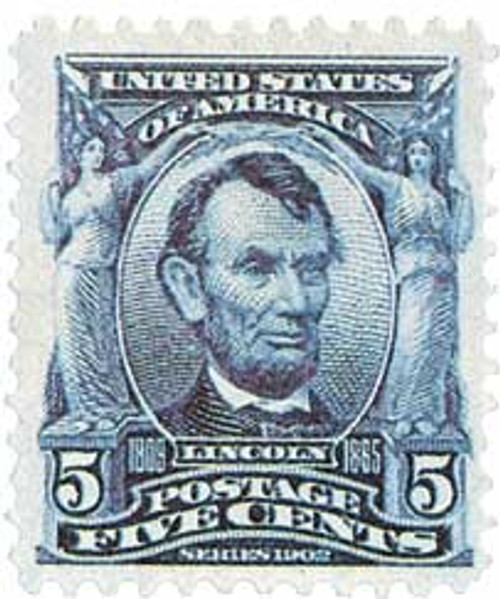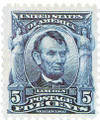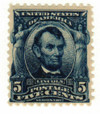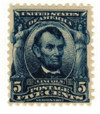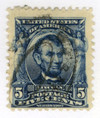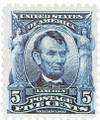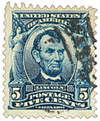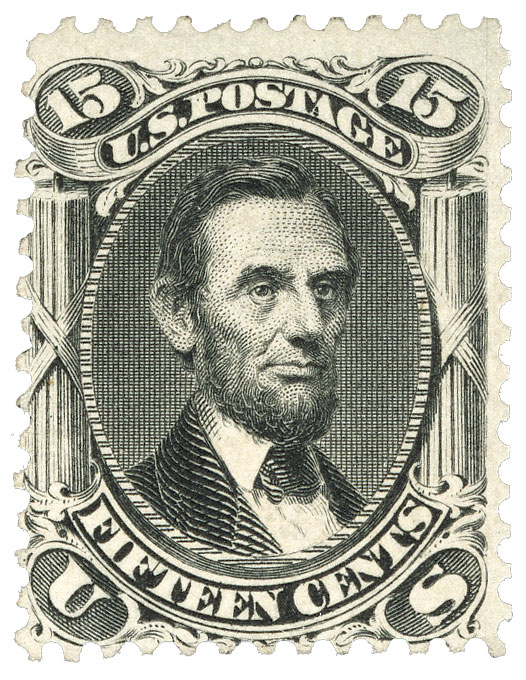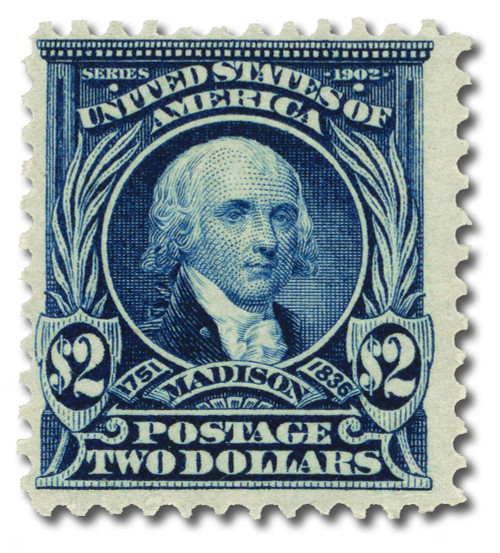
# 304 - 1903 5c Lincoln, blue
Series of 1902-03 5¢ Lincoln
Quantity issued: 550,000,000 (estimate)
Printed by: Bureau of Engraving and Printing
Method: Flat plate
Watermark: Double line
Perforation: 12
Color: Blue
Death Of President Lincoln
By early April 1865, the Civil War was drawing to a close. The Union Army had taken the Confederate Capitol at Richmond and Robert E. Lee had surrendered his troops at Appomattox Court House in Virginia.
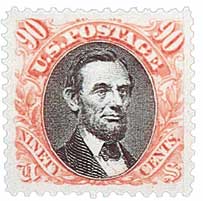
As hope for the war’s end grew nearer, President Lincoln was as cheerful as anyone had seen him in years. His widow later recalled how he “was almost boyish in his mirth… free from care, surrounded by those he loved so well and by whom he was idolized… I never saw him so supremely cheerful – his manner was even playful.”
In spite of his good mood, Lincoln had admitted to his close friends that he’d had a troubling nightmare two weeks before about what would be his last day. He’d dreamed that he was wandering the White House, following the sounds of sobs, only to discover his family and friends mourning his death.
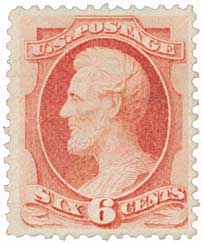
Despite the ominous dream, Lincoln remained positive and joyful, even attending a play with his wife on April 14. It was there, at Ford’s Theater, while watching Our American Cousin, that President Lincoln was given the unfortunate distinction of becoming the first assassinated US President. Reportedly, Lincoln’s bodyguard had left the theater during intermission to join friends for a drink, leaving the president unguarded when John Wilkes Booth arrived to shoot him.
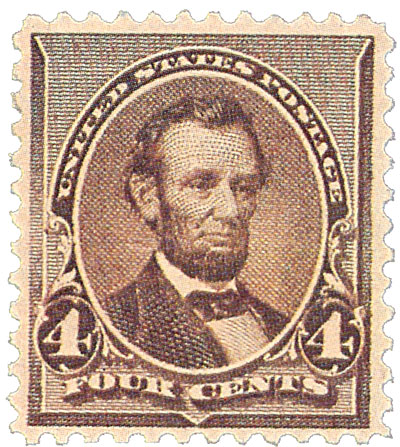
A well-known actor, Booth entered the President’s box about 10:25 p.m. Knowing the play by heart, he waited for one of its most famous lines to be uttered, and used the audience’s laugh to muffle the sound of his gunshot. He’d shot President Lincoln in the back of the head. Booth was immediately pursued by one of Lincoln’s guests, Major Henry Rathbone. Booth leaped from the box and crossed the stage, which lead the audience to believe he was part of the play. He then shouted, “Sic semper tyrannis!” (Thus always to tyrants!) and “The South is avenged!” and escaped the theater.
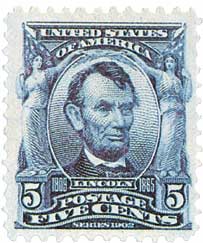
Meanwhile, in the Presidential Box, three doctors who had been in the audience attended to Lincoln. They realized he could not be saved, but moved him across the street to the Petersen House, where he died at 7:22 on the morning of April 15. But the news of his assassination had already begun to spread across the country just moments after the shooting.
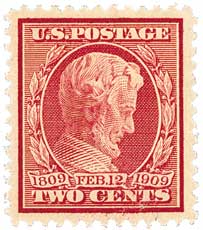
Booth went on the run, traveling to Maryland to collect weapons. He remained in hiding at a tobacco farm for several days before Union soldiers discovered him. They surrounded the barn and warned that they would set it on fire unless Booth gave himself up. When he responded, “I will not be taken alive!” they set the barn on fire. Then, one of the men shot and paralyzed Booth. He was carried outside and told a solider “Tell my mother I die for my country.” Looking at his hands, Booth spoke his last words, “Useless…Useless” before dying two hours later.
Series of 1902-03 5¢ Lincoln
Quantity issued: 550,000,000 (estimate)
Printed by: Bureau of Engraving and Printing
Method: Flat plate
Watermark: Double line
Perforation: 12
Color: Blue
Death Of President Lincoln
By early April 1865, the Civil War was drawing to a close. The Union Army had taken the Confederate Capitol at Richmond and Robert E. Lee had surrendered his troops at Appomattox Court House in Virginia.

As hope for the war’s end grew nearer, President Lincoln was as cheerful as anyone had seen him in years. His widow later recalled how he “was almost boyish in his mirth… free from care, surrounded by those he loved so well and by whom he was idolized… I never saw him so supremely cheerful – his manner was even playful.”
In spite of his good mood, Lincoln had admitted to his close friends that he’d had a troubling nightmare two weeks before about what would be his last day. He’d dreamed that he was wandering the White House, following the sounds of sobs, only to discover his family and friends mourning his death.

Despite the ominous dream, Lincoln remained positive and joyful, even attending a play with his wife on April 14. It was there, at Ford’s Theater, while watching Our American Cousin, that President Lincoln was given the unfortunate distinction of becoming the first assassinated US President. Reportedly, Lincoln’s bodyguard had left the theater during intermission to join friends for a drink, leaving the president unguarded when John Wilkes Booth arrived to shoot him.

A well-known actor, Booth entered the President’s box about 10:25 p.m. Knowing the play by heart, he waited for one of its most famous lines to be uttered, and used the audience’s laugh to muffle the sound of his gunshot. He’d shot President Lincoln in the back of the head. Booth was immediately pursued by one of Lincoln’s guests, Major Henry Rathbone. Booth leaped from the box and crossed the stage, which lead the audience to believe he was part of the play. He then shouted, “Sic semper tyrannis!” (Thus always to tyrants!) and “The South is avenged!” and escaped the theater.

Meanwhile, in the Presidential Box, three doctors who had been in the audience attended to Lincoln. They realized he could not be saved, but moved him across the street to the Petersen House, where he died at 7:22 on the morning of April 15. But the news of his assassination had already begun to spread across the country just moments after the shooting.

Booth went on the run, traveling to Maryland to collect weapons. He remained in hiding at a tobacco farm for several days before Union soldiers discovered him. They surrounded the barn and warned that they would set it on fire unless Booth gave himself up. When he responded, “I will not be taken alive!” they set the barn on fire. Then, one of the men shot and paralyzed Booth. He was carried outside and told a solider “Tell my mother I die for my country.” Looking at his hands, Booth spoke his last words, “Useless…Useless” before dying two hours later.

